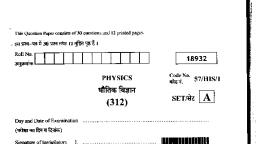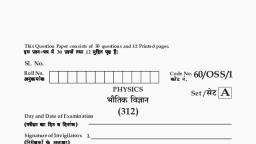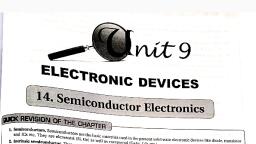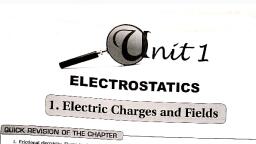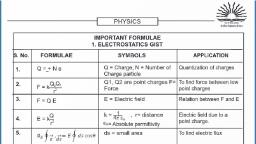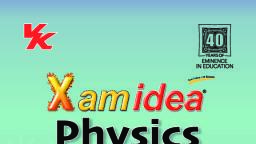Page 1 :
MR. MANISH VERMA, , Mr. Manish Verma as a YOUTUBER &, International Motivational Speakers, Professional Teacher || Problem Consultant ||, NIOS DU - SOL Students Coordinator || Founder, of Open schooling Awareness Program || CEO &, Founder of The Life Progress Academy, Social, worker., I want to help you all in every way because we, can contribute in any way in the development of, the country which will be a true tribute to the, brave heroes and it will be my first priority to, take the country to a new height for which I, have tried to convert some of my ideas from, social media and from my educational academy, into basalis in which the safety of women, the, education of daughters, is the cause of terror, from the country. Protection of spirit and, environment should be our first priority! Hope, you all get full support in this., ©THE COPYRIGHT ACT 1957., All rights reserved. No part of this publication may be, reproduced, distributed, or transmitted in any form, or by any means, including photocopying, recording,, or other electronic or mechanical methods, without, the prior written permission of the publisher, except, in the case of brief quotations embodied in critical, reviews and certain other noncommercial uses, permitted by copyright, , For more updates visit our web., www.manishvermalpa.com, , Manish Verma
Page 2 :
Raise hands with Manish Verma, fear be fearless, , Mr. Manish Verma as a YOUTUBER and Life progress academy Teacher || Problem Advisor, || Founder of Open Schooling Awareness Program || CEO and founder of Life Progress, Academy, social worker. I want to help you all in every, way because we can contribute in any way to the, development of the country which will be a true tribute, to the brave heroes and it will be my first priority to take, the country to a new height for which I, my I am trying to, spread some ideas through social media to all of you! In, which safety of women, education of daughters,, eradication of terror from the country and protection of, environment should be our first priority! Hope all of you, will get full support in this., “Every person in India should be educated, not book, education but a viable education which is necessary for, both good life and development of the country….., This has been created so that everyone can understand, the fear of Channel Exam and Study, in an easy way, it is, not a book education but a practical education which is, necessary for both good life and development of the, country., If you also want to be famous in this world, then start working hard today because today is, the history of tomorrow ..! By - Manish Verma, All of you are with me, otherwise what is my status!, Manish Verma
Page 3 :
Gratitude, We are all familiar with this fact that unless education is simple, then there are many, difficulties in understanding even the simple things, no matter what the board is. If it is, the matter of NIOS Board, then new students have difficulty in understanding its pattern, and syllabus, and due to lack of correct information, we fail the exam. But after working, for many decades for NIOS students in Manish Verma, I came to know that the large, number of students failing in NIOS is due to lack of proper guidance, guidance and simple, book notes., To solve this problem, our team has brought simple notes, important questions and, answers for the exam for NIOS students., The result of our best efforts and tireless hard work is this Chemistry book which includes, notes, which includes the entire syllabus of NIOS. In preparation for which Vicky Verma, and team members of Life Progress Academy contributed and it was ready after months!, The specialist professor of chemistry subjects has helped a lot in this., , Hope you like it a lot and NIOS students will take full advantage of it and bring more, marks in chemistry., , Manish Verma, (NIOS Students Coordinator)
Page 18 :
Chapter – 1, •, , Electrostatics: It is the branch of physics in which we study about charges at rest., • Work Function: It is defined as minimum energy required to remove an electron, from the substance., S.I unit – Joule, Practical unit – Electron Volt, 1 E.V = 1.6 × 10-19 J, , • Charging by rubbing (due to friction):, Consider two substance A and B such that work function of B is greater than work, function of A. When rubbed A we provided energy to overcome friction between, them., Since A has lower work function therefore it will remove electron and hence it will, get positive charge. Where has B has higher work function so, that it will gain, electron hence it acquires negative charge., , ➢ Properties of electric charge:, • Conservation:, In an isolated system the algebraic sum of electric charges always remains constant., Consider an isolated system consist from A and B which are initially uncharged, therefore initial charge of system is zero., Let work function of A is greater B. When we rubbed A and B. B will lose electron and, hence occurs positive charge. These electrons will be gained by A and it will occur, negative charge., , •, , Quantization: The charge of a substance is always an integral multiple of charge, an electron., , Q = ±ne, Q = ± 1.6 × 10-19 C, Q = ± 3.2 × 10-19 C, , •, , Additive properties: Since charge is a scaler quantity net charge a body is, algebraic sum of indivisible charges.
Page 19 :
• Coulomb’s Law:, Force of attraction or repletion between to stationary charges is directly, proportional to the magnitude of two charges and inversely proportion to the square, of distance between them., This force acts along the lying between two charges., (Note: Point Charges mean size of charges bodies, is very small as compare to distance, between them)., , F α q 1 q 2 / r2, F = k q1 q2 / r2, [ k – constant of proportionally known as electrostatic force constant], Value of K: (vacuum /air / free space), cgs system k = 1, SI system k = 9 × 109 Nm2 / c2, Where k = 1 / 4𝜋 ∈0, ∈0 = 8.85 × 10-12 c2 / Nm2, ∈0 is permittivity of free space., , For any other medium:, K=1/4𝜋 ∈, where ∈ permittivity of medium.
Page 20 :
• Significance:, Because Fa / Fm = ∈r, Fa = Fm ∈r, Therefore, electrostatic force acting in a medium is inversely proportion dielectric, constant., , • Coulomb’s Law in Vector form:
Page 21 :
• Superposition Principle:, To calculate net forces on a charge due to any number of charges we first calculate, individual forces acting on a charge dur to all other charge and do their vector sum x, – axis., , Note:, A) Part ignore sign of charges where calculating force., B) Part vectors are same direction are added., , C) Part vectors are opposite direction are subtracted and direction is in the direction of, force is higher magnitude., D) Part when vectors are inclined certain angle then resultant is taken., R = √A2 + B2 + 2AB cos𝜃
Page 22 :
• Difference between Charge and Mass:, , • Difference between Gravitational Force and Electrostatic, Force:
Page 23 :
Note:, , Permittivity: The ability of a material to store electric energy in an electric field., •, , Electric Field: It is defined as space or region around charge in which it can exert, electrostatic force on any other charge.
Page 24 :
•, , Electric field intensity / strength: At a point it is defined as force per unit, positive charge / test charge placed at that point., , S.I unit = N/C, , •, , Electric dipole: It is consisting of two charges -q and +q which are separately by, a small distance mid-point of -q and +q is called centre of dipole. The line joining the, charges is called dipole axis., , •, , Dipole moment = q × 2a, It is vector quantity its direction is along dipole axis from -q to +q., S.I unit = cm, , • Electric field intensity at a point on axial line of electric dipole:
Page 25 :
•, , Consider an electric dipole consisting of charges -q and +q separately by a distance, 2a. We want to calculate electric field intensity at a point P an axial line such that OP, = r., , • Electric field intensity at a point an equilateral line of an, electric dipole:, Consider an electric dipole consisting of charges -q and +q separately by a small, distance 2a. We want to calculate electric int P an equilateral line such that OP = r.
Page 27 :
Special Case: For short dipole r > a. therefore a2 can be neglected., , E⃗ = -kp⃗ / r3, Note:, 1. For short dipole Eaxial = 2Equ., 2. For axial line p⃗ is parallel to E⃗ [𝜃 = 00], For equilateral line p⃗ is antiparallel to E⃗ [𝜃 = 1800], 3. For a point charge E α 1/r2 and for short dipole E α 1/r3., , • Types of charge distribution:, 1. Linear charge distribution: If charge is distribution on a line straight or curve, than it is called linear charge distribution., ., , Linear charge density = charge/length, S.I unit = c/m, , 2. Surface charge distribution: If charge is distributed over a surface it is called, surface charge distribution., Surface charge density = charge/area, S.I unit = c/m2, , 3. Volume charge distribution: If charge is distribution over a volume or regain, space it is called volume charge distribution., Volume charge density = charge/volume, S.I unit = c/m3
Page 28 :
• Electric field lines: (lines of forces), An electric line force may be defined as the curve along which a small test positive, charge would tend to move when free to do so, in an electric field and the tangent to, which at any point give the direction of electric field at that point., These are imaginary line which are used to represent electric field., , • Electric field lines for different charged system:, 1. For positive point charge: (q > 0), Electric field line will originate from positive charge., 2. For negative charge:
Page 29 :
3. For electric dipole:, , 4. For a pair of two equal positive charges:, , The field E⃗ is zero at the middle point N of the line joining to positive charges. These points, is called neutral point from which number line which passes., 5. For a pair of negative charges:
Page 30 :
6. Field lines a positively charged plane conductor:, , Line of forces are parallel equi-placed and normal to the conductor indicating that electric, field is uniform at all points near the plane of the conductor., , Properties of electric line of force:, 1. A tangent drawn at any point of electric field line will gives direction of electric field, intensity at that point., 2. If electric field lines cannot cross or intersect each other. If they intersect than their, will be two tangents at the point of intersection and hence at that point there will be, two direction of the electric field which is not possible., 3. If electric field lines closed to each other than it indicates strong electric field at viceversa., 4. The lines of forces start at positive charges and at negative charge that is they, cannot from closed loops., , • Differentiate between magnetic and electric field:, Ans: magnetic field line from loop but electric filed line not form loops., , 5. The line of force does not pass through a conductor because the electric field inside, a conductor is zero.
Page 31 :
•, , Uniform electric field: It, means constant electric field that is, electric field intensity has same, magnitude and same direction at, every point., It is represented by drawing electric, fields lines which are parallel and, equi-spaced., [Torque = r⃗ × F⃗], , • Torque on electric dipole in a uniform electric field:, {E = F⃗ / q0}, Consider an electric dipole consisting of -q and +q separated by a distance 2a it is, kept in a uniform electric field of intensity E., We know that τ⃗ = F⃗ × r⃗ … (1), F1 = -qF (along negative x-axis), Force on charge +q due to field E⃗., F2 = qF, These forces are equal in magnitude opposite and have different line of action say, they form a couple which produce the torque., Here, BC is perpendicular distance let Q be the angle between p⃗ and E⃗., Sin𝜃 = BC/2a, BC = 2a sin𝜃, τ = qE 2a × sin𝜃, τ = q × 2a × E × sin𝜃, τ = p E × sin𝜃, in vector form τ⃗ = p⃗ × E⃗, The direction of torque is perpendicular to both p and E and directed in word by right hand, thumb rule., , Special case: When 𝜃 is 900 τ is maximum., ΤMAX = p E
Page 32 :
• Electric potential energy due to a dipole in a uniform electric, field:, When a dipole is placed in a uniform electric field it experience is torque and tends, to rotate if we want to rotate dipole in opposite direction external work done is, stored as energy of dipole called electric potential energy., dw = torque × ang. Displacement, dw = p E sin𝜃 × d𝜃, Total work done, W = ∫ 𝑑𝑤, W = ∫ 𝑝𝐸 𝑠𝑖𝑛𝜃 𝑑𝜃, 𝜃2, , W = p E ∫𝜃1 𝑠𝑖𝑛𝜃 𝑑𝜃, W = - p E [cos𝜃2 – cos𝜃1], , ➔ Special case:, Let 𝜃1 = 900, 𝜃2 = 𝜃, Then, w = -p E sin𝜃, w = - (P⃗ × E⃗), It is scaler quantity; S.I unit = Joule, , • Area vector:, Area is a scaler quantity but can be considered as A⃗ by assigning it a direction,, perpendicular to area normal to the drawn either upwards and downwards.
Page 33 :
•, , Electric flux (∅): It liked with a surface is defined as number of electric fields, line passing through the surface but, these lines are imaginary and hence, cannot be physical counted., , It is a scaler quantity. S.I unit is Nm2/C., Integral form,, ∅ = E⃗. S⃗, ∅ = ∫ 𝐸⃗⃗ . 𝑑𝑆⃗⃗, , • Gauss Theorem:, ∅ = ∫ 𝐸⃗⃗ . 𝑑𝑆⃗⃗ = q/ɛ0, Its state that electric flux linked with a closed surface in vacuum is equal to 1/ɛ0 times, charge enclosed by closed surface., , Proof:
Page 34 :
• Derivation with the help of Gauss theorem:, 1. Electric field intensity at a point due to thin finite line charge:, Consider an infinite line charge having linear charge, density. We want to calculate electric field intensity at a, point P lying at a distance r from line charge surface of, radius ‘r’ length ‘l’ with its axis along the line charge., A/c to Gauss theorem:, ∅ = ∮ 𝐸⃗⃗ . 𝑑𝑠⃗ = q/ɛ0, ∅ = ∮ 𝐸𝑑𝑠 𝑐𝑜𝑠𝜃, ∫ 𝐸𝑑𝑠 𝑐𝑜𝑠𝜃 + ∫ 𝐸𝑑𝑠 𝑐𝑜𝑠𝜃 = q/ɛ0, ∫ 𝐸𝑑𝑠 cos 00 + ∫ 𝐸𝑑𝑠 cos 90 0 = q/ɛ0, E ∫ 𝑑𝑠 = q/ɛ0 => E (2𝜋rl) = q/ɛ0, E = q / 2𝜋rlɛ0, E = d / 2𝜋rlɛ0, , 2. Electric field intensity due to thin infinite sheet of charge:, Consider an infinite sheet of charge having surface charge density we want to calculate, electric field intensity at a point P lying at a distance r from the sheet., ∮ 𝐸⃗⃗ . 𝑑𝑠⃗ = q/ɛ0, ∫ 𝐸𝑑𝑠 𝑐𝑜𝑠𝜃 + ∫ 𝐸𝑑𝑠 𝑐𝑜𝑠𝜃 = q/ɛ0, ∫ 𝐸𝑑𝑠 cos 00 = q/ɛ0, E ∫ 𝑑𝑠 = q/ɛ0, E (2𝜋a2) = q/ɛ0, E = q / 2𝜋a2 ɛ0, E = 𝜎 / 2𝜋a2 ɛ0, Note: Electric field produce in a thin, infinite sheet does not depends on distance of the point from the sheet and hence has same, value at every point so, it is an example of uniform electric field.
Page 35 :
3. Electric field intensity due to a charged spherical shell:, Case I: When point lies outside the sphere. Consider a, thin sphere of radius ‘R’ centre at 0 having uniform, surface charge density., We want to calculate electric field intensity at a point P, outside the spherical shell such that OP = r, , Case II: Electric field intensity due to hollow:, When point lies inside the sphere. Consider a thin spherical shell of radius ‘R’ at centre 0, having uniform surface charge density. We want to calculate electric field intensity at point, P inside the spherical shell such that OP = r., Since, gaussian surface does not enclosed any charge because whole charge lies on surface, of shell.
Page 36 :
Case III: E = 0, Therefore, electric field intensity inside a hollow charge metal sphere is always zero., , Note: To protect an instrument from an external electric field it is kept inside a hollow metal, conductor this phenomenon is called electrostatic shielding., , Draw the graph of the following:, • Point charge
Page 37 :
• Infinite line charge
Page 38 :
Chapter – 2, Electrical potential and capacitance, • Electric potential difference (v):, It is the difference between two points is equal to amount of work done in moving a unit, positive charge from one point to another point in, electrical field., VA – VB = WBA / q0 (It is scaler quantity), S.I unit = J/C or Volt (v), , •, , Electrical potential (v): Electrical potential at any point is equal to amount of, work done in moving a unit positive charge from infinity to a point in electric field., VB = 0 (because electric potential at infinite is zero), V = w/q0, , • Electrical potential due to a point charge:, Small work done in moving a charge from B to A., d w = F⃗. dx⃗, = F dx cos𝜃, = F dx cos 1800, = - F dx, Total work done, W = ∫𝑑 𝑤, W = ∫ −𝐹𝑑𝑥, 𝑟, , W = ∫∞ −𝑘𝑞𝑞 0 / x2 dx, 𝑟, , W = -kqq0 ∫∞ 1/𝑥 2 dx, W = kqq0 [1/r – 1/∞], W = kqq0 / r
Page 39 :
V = w / q0, V=kq/r, , • Electrical potential due to dipole on axial line:
Page 40 :
• Electrical potential dipole on equilateral line:, , V=0, , • Electric potential due to dipole any point:, Electric potential at point A., VA = -k q / r1, Electric potential due to charge at point B., VB = k q / r 2, V = VA + VB, V = k q [1/r2 – 1/r1], In ∆ AOM, Cos 𝜃 = OM / a, a Cos 𝜃 = OM
Page 42 :
• Relation between electric field and potential:, Small W.D in moving a test charge from A to B., , Negative sign indicated that E.F is in the direction of decreasing potential., , • Equipotential surface:, Any surface has same electric potential at every point on it is called equipotential, surface., , Properties of equipotential surface:, 1. No work is done in moving a test charge over equi-potential surface., W = q0 (∆v), But VA = VB, W = q0 (o), W=oJ, , 2. Electric field is always normal to the equi-potential surface at every point., Reason: If the field were not normal to the equi-potential surface it would have a non-zero, component along the surface so, to move a test charge against the component a work has, to be done but no work is required to move attest charge over equi-potential surface having, E.F is always normal to the equi-potential surface., , 3. Equi-potential surface are closer together in the regain of strong field and further, apart in the regain of weak field., E = -dv / dr, dr = -dv / E, dr α 1/E
Page 43 :
4. No two equi-potential surface can intersect each other., Reason: If the intersect, then there will be two value of electric potential at the point of, intersection which is not possible., , Draw equi-potential surface:, • Dipole, , Electrical potential energy:, • Electric potential energy of a system of two-point charges:, Electric potential energy of a system of point charges may be defined as the amount of work, done in assembling the charge at the location by bringing them from infinity., , No, work is done in moving charge ‘q’ at, position vector r⃗., W1 = 0, W.D in moving ‘q2’ at position vector r2⃗., W2 = V1 q2, W2 = (kq1 / r12) q2, W2 = (kq1 q2 / r12), Total work done = W – W1 + W2, W = (kq1 q2 / r12), This, work done is stored in the form of electric potential energy., U = kq1 q2 / r12
Page 45 :
The capacitance of capacitor depends on:, 1. Shape and size, 2. Surrounding medium, 3. Presence of another conductor in its neighbourhood., , • Principle of capacitance:, ➔ The capacitance of an insulated conductor is, considerably increase when be placed an earth, connected conductor near it., , ➔, , Capacitor: A capacitor is a arrangement of two conductors separated by an, insulating medium that is used to store electric charge on electric energy., , On the basis of, • Parallel capacitor, , shape: [capacitor]
Page 46 :
•, , •, , Spherical capacitor, , • Capacitance of parallel capacitor:, Let us consider a PPC having plate area ‘A’ and separation ‘d’., E.F between the two plate, E = 𝜎 / ɛ0, We know that, V = E. d, V = 𝜎 / ɛ0. d, V = Q / Aɛ0. D, We know that Q = CV, C = Q/V, C = Aɛ0 /d
Page 48 :
• Energy stored in a capacitor:, , Small W.D is moving a charge ‘dq’ from positive plate to negative plate is, d w = v dq, This W.D is stored in the form of electric potential energy.
Page 49 :
•, , Energy Density:, It is stored per unit volume., , • Redistribution of charges:, , When we connect two capacitors then charge will flow from higher potential to lower, potential until the potential of both. The capacitor will become same and that potential is, called common potential.
Page 51 :
•, , Dielectric: It is an insulator which can be polarised., • Polar dielectric (E =0), If dielectric is placed in external field then it gets, polarised and E.F inside the dielectric reduces., , • Non-polar electric (E≠0), , • Capacitance of a parallel plate capacitor with dielectric slab, between its plates:, Let us consider a PPC with plate area ‘A’ and separation, ‘d’. A dielectric of thickness t (t × d) and dielectric constant, ‘k’ is instead between the parallel plates., , If dielectric is fully filled., t=d, Cm = K C0
Page 52 :
• Effect of dielectric on varies parameter:, 1. Effect of dielectric when the battery is kept disconnected from, the capacitor:, , 2. Capacitor is connected with battery and dielectric is inserted:, , Dielectric strength: The maximum electric field that can exist in a dielectric, without causing the breakdown it insulating property is called dielectric strength of, materials.
Page 53 :
Chapter – 3, Current Electricity, Electro (charge) dynamics(motion):, •, , Electric Current(I): It is the rate of flow of charge., I=dQ/dt, , S.I. unit of current = C/s or ‘A’, , Ques: Charge (Q) = 5t2 + 7t + 8, find electric current at 2 sec., I=dQ/dt, I = 10t + 7, I = 20 + 7, I = 27 A, , • Direction of Current:, • Conventional Current:, The direction of conventional current is opposite, to the flow of electron., , The direction of electronic current is in the, direction of e- is called electronic current.
Page 54 :
Ques: current is a scaler quantity or vector? Why?, Ans: current is a scaler quantity even through it has magnitude as well as direction because, it does not obey vector law of addition., , • Area under current-time graph gives:, , • E.M.F (electromotive force):, It is the maximum potential difference between the positive and negative electrodes when, the cell is not in use or current is not withdrawn from the battery., , • Terminal potential difference (v):, It is the potential difference between the positive and negative electrodes when the, cell is in use or current is withdrawn from the cell., , •, , Internal resistance: It is the resistance offered by the cell.
Page 55 :
• Relation between E and V:, V=E–Ir, , • OMH’S Law:, The current flowing through conductor is directly proportional to the potential, difference applied across its end’s provided the temperature and other physical, condition remain unchanged., , •, , Resistance: It is the inheritance property of conductor by virtue of which is, opposes to the charge through it., R=V/I, S.I. unit is V/A or ohm., 1 ohm = 1 volt / 1ampere., , • Factor affecting resistance:, 1., 2., 3., 4., , Length, Area of cross section, Temperature, Nature of material, , R α l/A, R = 𝜌l/A, 𝜌 = RA / l, S.I unit of resistivity (Ώ m).
Page 56 :
• Resistivity (specific resistance):, It is numerically equally resistance when length of wire is 1 m and area is 1 m 2., , Note: Resistivity do not depend on length and area of cross-section it only depends on, temperature and nature of material., , •, , Conductance (G): It is the reciprocal of resistance., G=1/R, , S.I unit, Ώ-1, mhQ, Siemen (s)., , •, , Conductivity: It is reciprocal of resistivity., 𝜎 = 1/𝜌, , S.I unit Ώ-1 m-1 / sm-1, (Conductivity is also do not depends on length and area of cross-section)., , •, , Current Density: Current flowing per unit area., , J = I/A, S.I unit A/m2, , • Colour coding of carbon resistor:, 62 × 105 ± 20% Ώ, 26 × 108 ± 5% Ώ (Resistance Measurement)
Page 57 :
•, , Drift Velocity: It is the average velocity acquire by the free electrons of a, conductor in the opposite direction of externally applied electric field., , •, , Thermal Velocity: It is the velocity of e- acquire by the heat is called thermal, velocity.
Page 58 :
• Expression for drift velocity:, When number of external fields is, applied then e- are in random, motion., Let their velocities are u1⃗, u2⃗, u3⃗,, …... un⃗, Now external field on applied to the conductor, , Now all the e- moves in opposite direction of electric field. During its motion they collide, with each other., Force on each electrode, F⃗ = -eE⃗, m a⃗ = -eE⃗, a⃗ = -eE⃗ / m, , (F = ma)
Page 59 :
•, , Relaxation time: It is the average time between two successive collision., , Length of conductor = l, E = -v/u, [As the temperature increases, relaxation time decreases because collide becomes more, frequent therefore drift velocity decrease]., , • Relation between drift velocity and current:, Let the conductor has ‘n’ e- per unit volume., Volume of conductor = Al, Total number of e- = n Al, Total charge, q = (n Al) e, I = q/t, I = n Al e/t, Vd = l/t, , • Current Density:, J = I/A, = A ne Vd / A, = ne Vd, J is a vector quantity direction along drift velocity., , • Proof of ohm’s Law:, We know that, I = A ne Vd, I = A ne (ev τ/ml), I/V = A ne2 vτ/ml v, I/V = A ne2 τ/ml
Page 62 :
S.I unit – k-1, -, , It is defined as change in resistance per unit original resistance per degree rise in, temperature., α is positive for metals., , For resistivity:, RT = R0 (1 + α ∆T), 𝜌T l/A = 𝜌0 l/A (1 + α ∆T), 𝜌T = 𝜌0 (1 + α ∆T), , • For Semi – conductor:, , As temperature increases a greater number of e- from valence band to conduction band., Therefore, conductance increases and resistance decrease.
Page 63 :
-, , α is negative for semiconductor., , • For alloy:, Example: [magainin, constant on, nichrome - Eureka], -, , α is positive but very small., , In case of alloy resistance increase with increase in temperature but with small rate., , Plot the variation of resistivity with temperature for:, a) Copper, , b) Nichrome
Page 66 :
• Condition for maximum current when cells are connected in, series of same e.m.f and internal resistance:
Page 67 :
I = total e.m.f / total resistance = nɛ / nr + R, , Special cases:, 1. If nr >> R, I = nɛ / nr, I=ɛ/r, , 2. If R >> nr, I = nɛ / R, If external resistance is greater than total internal resistance R>> nr than all the cells should, be connected in series to get maximum current., , • Condition for maximum current when cells are connected in, parallel of same e.m.f and internal resistance:, , If the total internal resistance is greater then external resistance than cells are connected in, parallel to get maximum current.
Page 68 :
• Condition for maximum current in mixed group:
Page 69 :
Hence, when external resistance is equal to total internal resistance then current is, maximum in mixed grouping., , •, , Kirchhoff’s Law: It states that the algebraic sum of all the current at a function, is, zero., , - Sign Conventional:, 1. Incoming current is taken as positive., 2. Outgoing current is taken negative., I1 + I2 – I3 – I4 – I5 = 0, I1 + I2 = I3 + I4 + I5, It is based on law of conservation of charge., , •, , Kirchhoff’s Voltage law/ mesh rule/ loop rule: It states that the, algebraic sum of all the voltages, in a close loop is zero., , - Sign Convention:, o Voltages drop in the direction of current is positive and voltage drop in the opposite, direction of current is negative., E.m.f of cell is taken as positive if we met positive plate first and vice-versa., It is based on conservation of energy.
Page 70 :
Loop CBADC, I/R1 + I/R2 + I/R3 - ɛ = 0, , • Wheat stone bridge:, -, , It is an arrangement of flow resistor by which we, can measure the unknown resistance with the, help of other three resistance., , •, , Balance wheat stone bridge: When the potential difference across the, Galvano meter is 0, i.e., no current flows through the Galvano meter., , Balanced condition of wheat stone bridge is P/Q = R/S, -, , Derivation of balance condition of wheat stone bridge from Kirchhoff’s law:, (Loop ABDA)
Page 71 :
• Meter bridge or slide wire bridge:, , P – resistance of wire ‘AJ’, Q – resistance of wire ‘JB’, According to balanced wheat stone bridge unit length, P/Q = R/S, Let ‘𝜎’ is resistance per unit length., P/Q = l1 / 100 – l1, R/S = l1 / 100 – l1, S = (100 – l1) R / l1, , •, , Meter bridge: It is the practical application of bridge and it is used to measure, unknown resistance.
Page 72 :
-, , Principle: It’s working is based on the principle wheat stone bridge., , P/Q = R/S, -, , Construction: It consist 1m long magainin wire of uniform cross-section. A, meter scale fixed over on wooden board there are two gaps between to copper strip, and A resistance box connect one gap and an unknown resistance connected, another gap., , -, , Working: After taking out a suitable resistance R from the resistance box, the joki, is moved along the wire AB till there is no deflection in the galvanometer this is the, balance condition of WSB. If P and Q are the resistance of wire AJ and JB, then for, balance condition of bridge P/Q = R/S., , •, , Potential meter: It is a device which is used to measure the potential, difference between two point more accurately., , •, , Principle: When constant current is flowing through the wire then potential, difference between two points is directly proportional to the length of the wire., , V = IR, V = I 𝜌 l/A, V = kl, Vαl, K = V/l (potential gradient), S.I unit = v/m,, Another unit v/m, v/cm, -, , Lesser the value of ‘k’ more sensitive will be the potential meter., The potential meter is said to be more sensitive when it measures lower values.
Page 73 :
Ques: Which potentiometer will you prefer?, , Ans: B will be preferred because B, is more sensitive., , • Application of potentiometer:, 1. To compare the e.m.f of two cells., 2. To measure the internal resistance of a cell., , Note: When the value of R is increase so, the value of k is decrease and length is increase., , • Sensitiveness:, -, , Lower the value of k more is the sensitivity of the potentiometer., Sensitivity of potentiometer can be increased by increasing length of potentiometer., , • Application:, 1. To compare the e.m.f of two cells:
Page 75 :
•, , Power: Rate of doing work is called power., , •, , Electric power: Rate of consumption energy., , •, , Efficiency: (output power / input power) × 100, , -, , Series combination: 1/Peq = 1/P1 + 1/P2 + 1/P3, , -, , Parallel combination: Peq = P1 + P2 + P3, , -, , • Limitation of ohm’s law:, -, , Non-ohmic conductor: The devices which do not obey ohm’s law is called nonohmic conductor., , Example: diode, thyristor, transistor., , •, , Mobility: u = Vd / E, It is defined as drift velocity per unit E.F.










